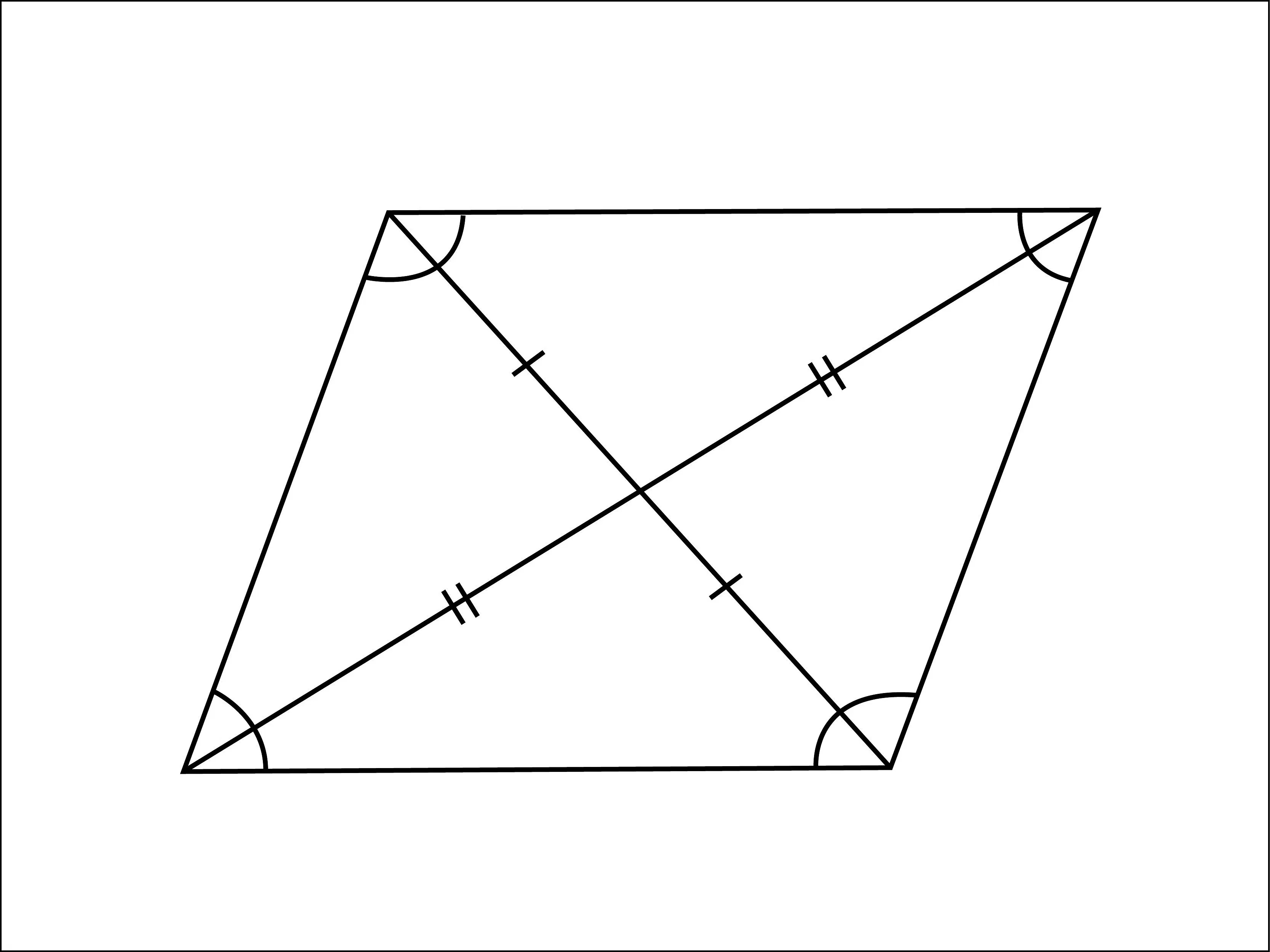
Ever wondered about the secrets hiding in plain sight within the shapes we encounter daily? Let's zero in on the rhombus, a shape that's more than just a diamond look-alike. What makes a rhombus so special, and why should we care? Well, for starters, rhombuses are everywhere, from the tiles under our feet to the jewels that catch our eye. They're a cornerstone in the world of geometry, holding fascinating properties and intriguing facts that can dazzle even the most math-averse among us. Ready to get your mind bent in the best way possible? Let's dive into the 19 best rhombus facts that will surely add a new angle to your perspective!
Key Takeaways:
- The rhombus is a special shape with equal sides and opposite angles, found in kites, crystals, and modern art. It's not just a geometric figure, but a versatile and beautiful part of our world.
- The rhombus is more than just a shape in math class. It's used in architecture, technology, and even fashion design, showing its influence across different fields and its potential for future innovation.
Understanding the Rhombus
A rhombus, often mistaken for a diamond shape, stands out due to its unique properties and characteristics. This four-sided figure, where all sides have equal length, is more than just a common geometric shape. It's a polygon that's part of the quadrilateral family, sharing the stage with squares and rectangles but with its own set of rules.
-
All sides of a rhombus are equal in length, making it a perfect example of symmetry and balance in geometry. This equality sets the stage for various mathematical explorations and properties.
-
Opposite angles of a rhombus are equal. This fact not only aids in solving geometric problems but also in understanding the deeper symmetry within the shape.
Rhombus in Real Life
Beyond textbooks and geometry problems, rhombuses make appearances in everyday life and nature, showcasing their versatility and beauty.
-
Kites and diamonds, often seen soaring in the sky, mimic the rhombus shape, making them stable during flight.
-
Many plants and crystals form rhombus shapes at a microscopic level, showcasing nature's preference for this geometric figure.
Mathematical Properties of a Rhombus
Diving deeper into the mathematical realm, rhombuses exhibit properties that make them a subject of interest among mathematicians and geometry enthusiasts.
-
The diagonals of a rhombus bisect each other at right angles. This property is crucial for solving complex geometric problems and proves the rhombus's importance in the study of geometry.
-
The sum of the interior angles of a rhombus equals 360 degrees, a common trait shared with other quadrilaterals but still a fundamental aspect that aids in various calculations.
Rhombus in Art and Design
Artists and designers often draw inspiration from geometric shapes, and the rhombus is no exception. Its symmetry and balance make it a favored element in various creative fields.
-
In modern art, the rhombus shape is used to create intriguing patterns and designs, showcasing its aesthetic appeal.
-
Interior designers use rhombus patterns for tiles and wallpapers, adding a touch of elegance and symmetry to spaces.
Educational Importance of Rhombus
In educational settings, the rhombus serves as a powerful tool for teaching various mathematical concepts and principles.
-
Students learn about the properties of a rhombus as part of their geometry curriculum, helping them understand complex geometric relationships.
-
Rhombuses are used in puzzles and educational games, making learning fun and engaging for students of all ages.
Unique Characteristics of Rhombus
While many geometric shapes have unique features, the rhombus has several that make it stand out.
-
A square is a special type of rhombus where all angles are right angles, highlighting the versatility and range of the rhombus family.
-
The area of a rhombus can be calculated using the formula ( text{Area} = frac{d_1 times d_2}{2} ), where (d_1) and (d_2) are the lengths of the diagonals. This formula demonstrates the rhombus's practicality in real-world applications.
Rhombus in Architecture
The influence of the rhombus extends to architecture, where its principles are applied to create visually striking and structurally sound designs.
-
Modern architects incorporate rhombus shapes in building designs, utilizing their geometric strength and aesthetic appeal.
-
Historical buildings sometimes feature rhombus-shaped elements, showcasing the timeless appeal of this geometric shape.
Rhombus in Technology
Even in the realm of technology, the rhombus finds its application, proving its relevance in the digital age.
-
Circuit designs and graphical user interfaces (GUIs) use rhombus shapes for icons and elements, benefiting from their distinct look and feel.
-
The rhombus shape is utilized in the design of certain computer and smartphone applications, making interfaces more intuitive and visually appealing.
The Future of Rhombus
As we look to the future, the rhombus continues to inspire innovation and creativity across various fields.
-
In fashion design, the rhombus is emerging as a pattern in clothing and accessories, signaling a trend towards geometric-inspired styles.
-
Advanced mathematics and physics research often involve the rhombus shape, exploring its properties to solve complex problems and theories.
-
With the advent of 3D printing and design, the rhombus is being used more creatively, pushing the boundaries of what can be achieved with this versatile shape.
A Final Look at Rhombus Facts
We've journeyed through the world of rhombuses, uncovering fascinating aspects of this simple yet intriguing shape. From its definition as a quadrilateral with all sides equal, to its presence in architecture and nature, rhombuses demonstrate versatility and beauty. We learned how they're not just a mathematical concept but also a practical shape found in everyday life. Their properties, such as equal opposite angles and the ability to tile a plane, show the depth of their simplicity. Whether you're a math enthusiast or just curious about shapes, these facts about rhombuses offer a glimpse into the geometric harmony that surrounds us. Remember, geometry isn't just about numbers and figures; it's about understanding the world in a new and exciting way.
Frequently Asked Questions
Was this page helpful?
Our commitment to delivering trustworthy and engaging content is at the heart of what we do. Each fact on our site is contributed by real users like you, bringing a wealth of diverse insights and information. To ensure the highest standards of accuracy and reliability, our dedicated editors meticulously review each submission. This process guarantees that the facts we share are not only fascinating but also credible. Trust in our commitment to quality and authenticity as you explore and learn with us.


